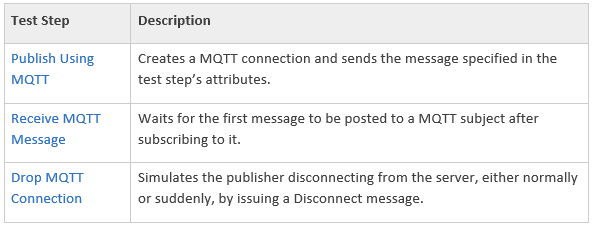
MQTT (Message Queue Telemetry Transport) Protocol
MQTT (Message Queue Telemetry Transport) Protocol
What is MQTT Protocol?
MQTT is a small, open data transfer protocol for Machine-to-Machine (M2M) and Internet-of-Things (IoT) communications. It can be used in constrained situations such as M2M and IoT communications which require a tiny code footprint. The following are the main characteristics of the MQTT protocol:
- Asynchronous protocol - The sender is not slowed down while waiting for a delivery acknowledgment. It can also keep sending messages.
- The messages are small. It has three parts: a fixed header that is always there, a variable header, and the message content.
- It can work in unstable networks
MQTT is a protocol used at the application level to communicate between clients and servers. Publishers indicate a topic in a message to the message broker, then subscribers subscribe to that topic. The server acts as a filter, distributing messages to subscribers based on their subscription. MQTT supports three different service levels: 0, 1, and 2. The first level of service ensures that the message reaches the recipient at least once. The highest level is used when there is a chance of message duplication on the receiver’s end. This is utilized when neither message loss nor duplication is acceptable. The more resources required to process MQTT packets, the greater the service level quality. If the service quality is 1 or 2, all subscribers who are subscribed to a certain subject but were disconnected for some reason would receive all messages once they are back on. The protocol does not require many resources to implement.
Client-Server Message Pattern
MQTT is a messaging system that allows publishers to send all messages to all interested customers at once. MQTT uses the Publish and Subscribe mechanism, which means it can only send messages to a single address. The broker then sends the data to the customers who require it.

A new way of communicating with a broker has been developed that allows publishers to send messages to their clients. The broker can send messages if the publisher’s connection fails or if the client is unavailable at the time a message is sent and save the message to all newly connected subscribers.
MQTT Topics
MQTT is a messaging system used by Facebook and Twitter. Topics are strings used by the broker to filter messages supplied to each connected client in MQTT. Before posting or subscribing to a subject, you do not need to initialize it. A topic is made up of levels separated by a slash. Here are some sample topics:

A customer can subscribe to multiple topics at the same time.
Will Message
MQTT ensures message delivery even if there are network difficulties or if the publisher goes down unexpectedly. When the publisher connects, the Will message is delivered to the broker. If the publisher disconnects without sending the Disconnect message, the broker will publish it.
MQTT Testing in ReadyAPI
ReadyAPI can communicate with your MQTT broker as both a publisher and a client. It can be used to generate load and functional tests.
MQTT Functional Testing
You can design a functional test that employs MQTT-related test stages to verify the broker’s functionality.

You don’t need to utilise a WebSocket server because the connection is formed directly with the broker.
You must use a real MQTT broker because ReadyAPI cannot spoof the MQTT broker.
MQTT Load Testing
MQTT broker with ReadyAPI can be used to test your system under heavy load. Create a load test for your broker to see how it operates under heavy loads. The Internet of Things (or IoT) is a network of interconnected physical things. Things—devices and equipment—send data to other devices that can collect it or use the data collected by other devices. A smart room thermostat or a washing machine that broadcasts its status over a Wi-Fi network are two common examples. For the time being, ReadyAPI supports the MQTT protocol, which allows these devices to communicate with one another. At Encoding Enhancers, we use MQTT protocol in the Leak detection system.